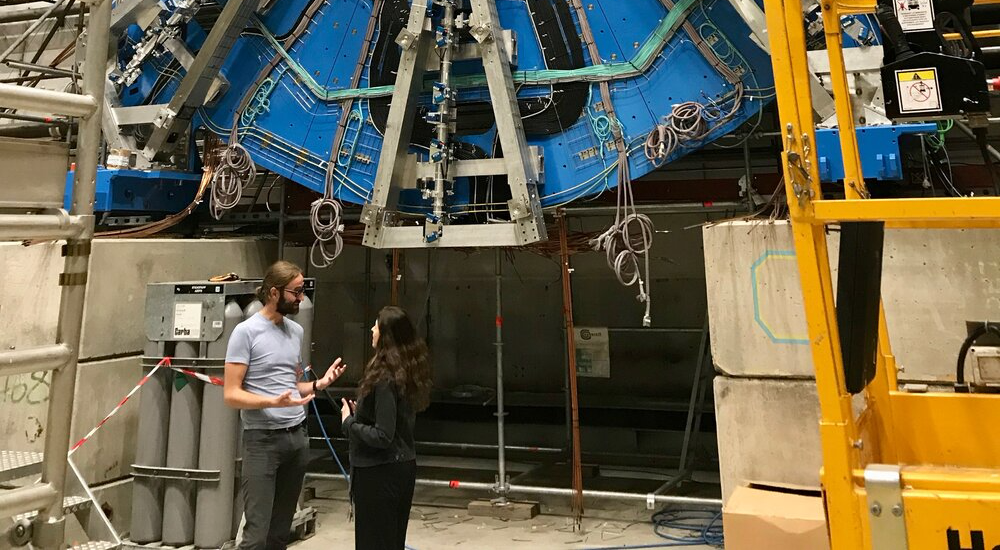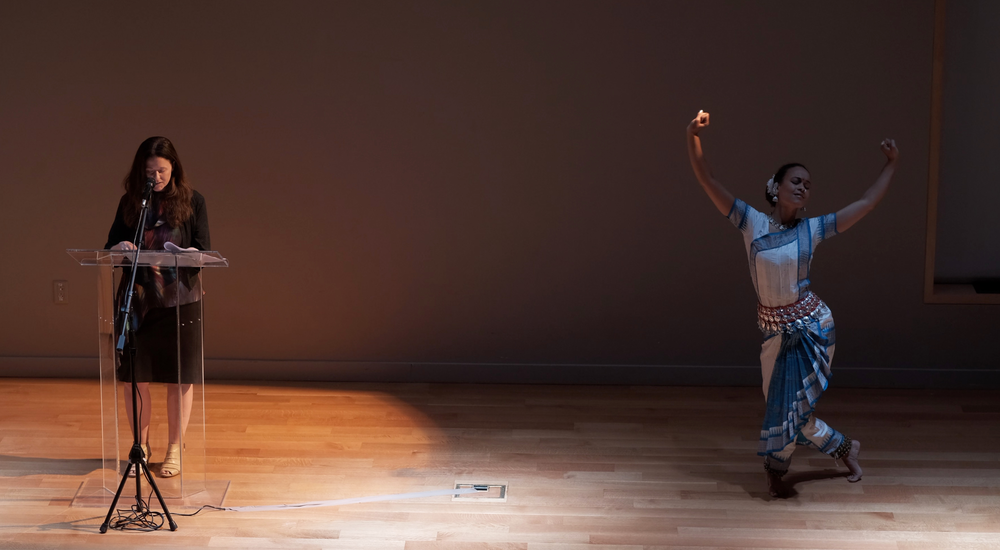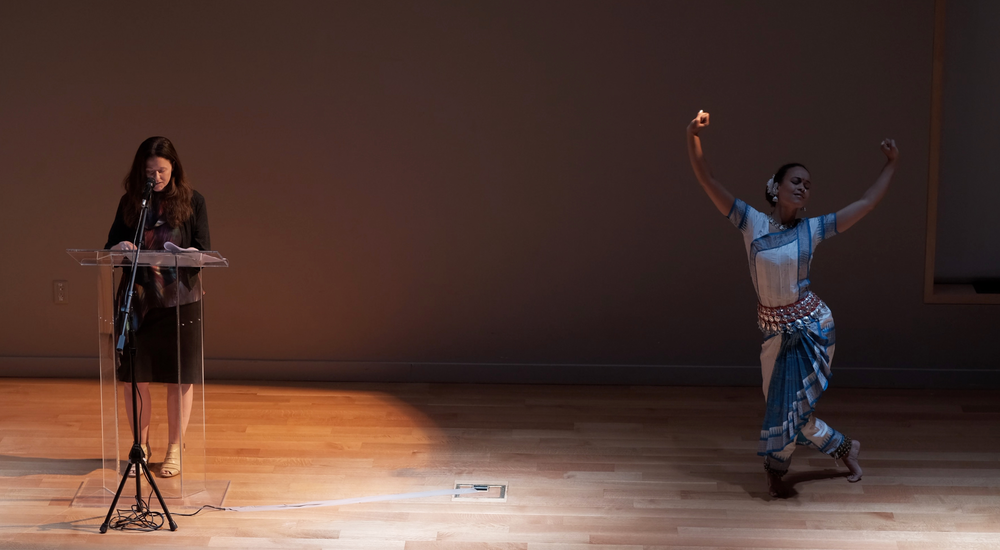Physics and Poetry in Radical Collaboration
The root of the English noun “poetry” is the Ancient Greek word poi, which means “to make,” a verb that led to poiēsis, the activity of bringing something into being. As a poet, I know that poetry is both a noun and the verb at its root. The word “root” comes from the Latin radicalis, which led to “radical,” the condition of fundamental change and reform. Poets, like scientists, radically challenge paradigms toward change and reform. When physicists construct the conditions for discoveries, such as the Higgs boson at CERN in Switzerland, and when poets construct interventions into culture and consciousness, both are practicing poiēsis, the artistic activity of making.
I experiment with poiēsis by visiting scientific research centers, such as CERN, where I work alongside scientists. The scientists talk to me about their research and often give me behind-the-scenes access to their experiments. I talk to them about the poetry-science connection and sometimes give poetry readings and lectures. During my most recent CERN visit, I saw the Large Hadron Collider, where the Higgs boson was discovered, and CERN particle physicist James Beacham and I brainstormed an idea for a physics-poetry experiment. Working toward a book about the experiment’s physics and poetics, we wrote poems and are drafting a cowritten scientific paper. I’ve also recently visited Cerro Tololo Inter-American Observatory in Chile, where I met astrophysicist Satya Gontcho A Gontcho, who researches dark energy at Lawrence Berkeley National Laboratory in California. She’s also a practitioner of Odissi, a classical Indian dance. We collaborated on a “danced-poem,” which involved me reciting a poem I’d written about dark energy while she performed a dance that she choreographed to the words.
Physics-poetry collaborations like these ones help break down disciplinary silos that have existed for over a century, diversifying thinking and methodologies. But for such connections to reach their full potential, scientists need to be trained in the literary arts and poets in the sciences. For example, a physicist might receive lessons in reading and writing poetry—one vessel through which we use language to reason and imagine—in order to gain insights into literary theory and poetic craft. Similarly, a poet might take classes in quantum physics in order to learn about the imaginative questions that scientists explore. While this training occasionally happens, larger platforms for it are needed.
Today’s physics-poetry collaborations draw from a long tradition of poets and artists responding to science. They also draw from scientific history where many early scientists were philosophers, artists, or poets. In the service of these traditions, I have helped establish a global network of science-engaged poets and arts-engaged scientists, organizing and participating in conferences, discussion projects, and class visits at universities, bookstores, and scientific research centers. These poetry-science connections represent a trailblazing, literary extension of the established art-science nexus where science interacts with the arts through education, outreach, and funding proposals. The art-science connection is part of an increasing number of collaborations across fields of knowledge and artistic practice.
Bringing science and the arts together also has the benefit of helping to combat ignorance, manipulation, bigotry, and violence. In addition to expanding knowledge and experience, which helps prevent and solve sociopolitical problems, the art-science connection helps protect science from destructive commercial and military aims through social critiques that are common in the arts. It also advances the influence of the arts, leading to more creativity and critical thinking.
When I use poetry and poetics to explore open questions in cutting-edge physics, questions mediated by translations between mathematics and language, I focus on quantum physics. I do so because quantum physics is central to the most pressing concerns in physics today, such as how to reconcile quantum physics with relativity, how to create a quantum computer, and the role of dark energy in cosmic acceleration. There is, however, another reason for my quantum-physics focus (see Arts & Culture: Poetry Takes on Quantum Physics). The quantum world is often described as strange when viewed through classical logic. But when I view the quantum world through poetic logic, I find it familiar and poetically sound.
Quantum physics, in my view, uses unacknowledged poetic principles to describe the properties of quantum phenomena such as uncertainty, observation, superposition, and entanglement. In the principle of indeterminacy or the uncertainty principle, a subatomic particle’s future position and momentum cannot be known with certainty, since its present state is measured in probabilities; in poetry, ambiguities that arise from uncertainty can be a form of artistic depth. In quantum physics, the observer affects the observed; in poetry, a reader can affect a poem’s meaning through interpretation. In quantum superposition, a subatomic particle can simultaneously exist in multiple states of spacetime; in poetry, alternative experiences with spacetime, such as simultaneity, can be evoked. In quantum entanglement, distanced quantum states of particles that were once near each other can instantaneously communicate; in poetry, which can exhibit quantum behavior, classical paradoxes need not be resolved. Poetry is an advanced technology like a particle collider or a telescope, extending the senses, intellect, and imagination. In poetry and quantum physics, the impossible is often probable and even inevitable.
Neither physics nor poetry are totalizing efforts leading to absolute truth. When theorized and conducted in union, both fields become far more wondrous: they carry new forms of information and experience, produce new ideas and technologies, and challenge dominant belief systems about the universe. It is the evolution of our questions, and not just our provisional answers, that advances scientific, artistic, and societal progress.







